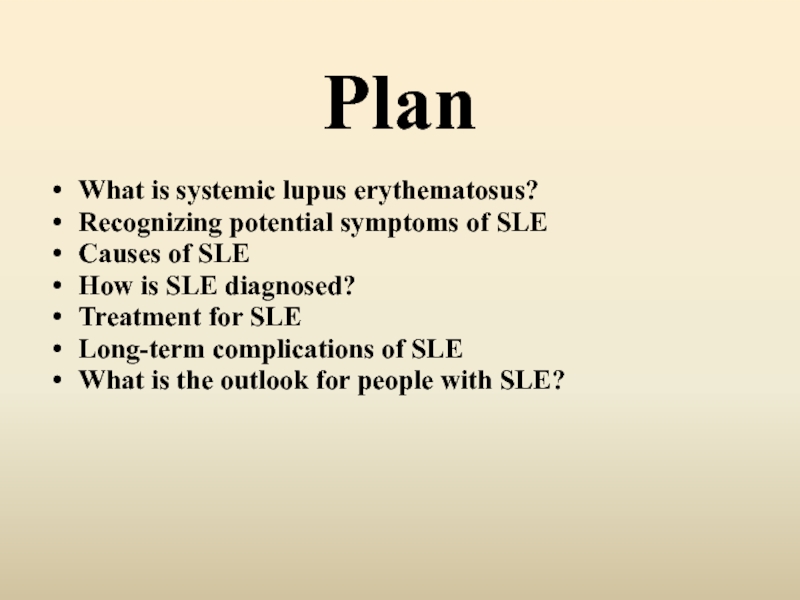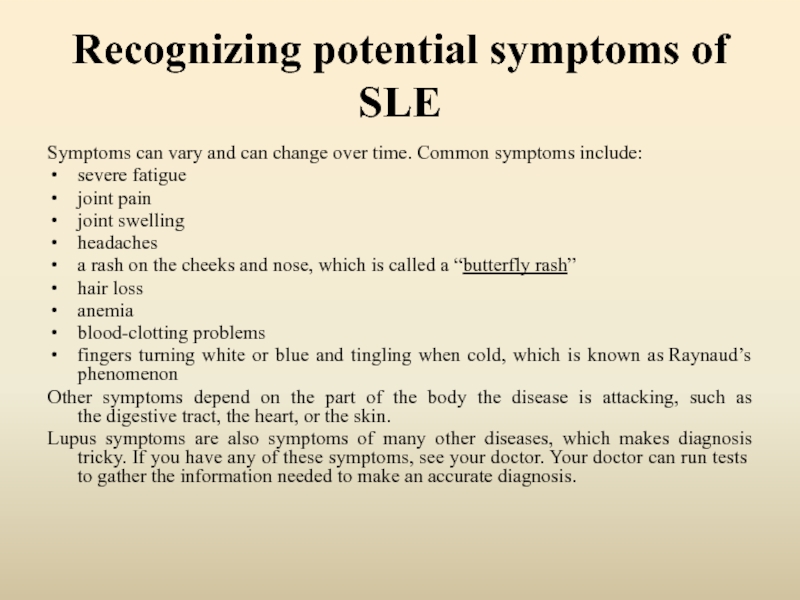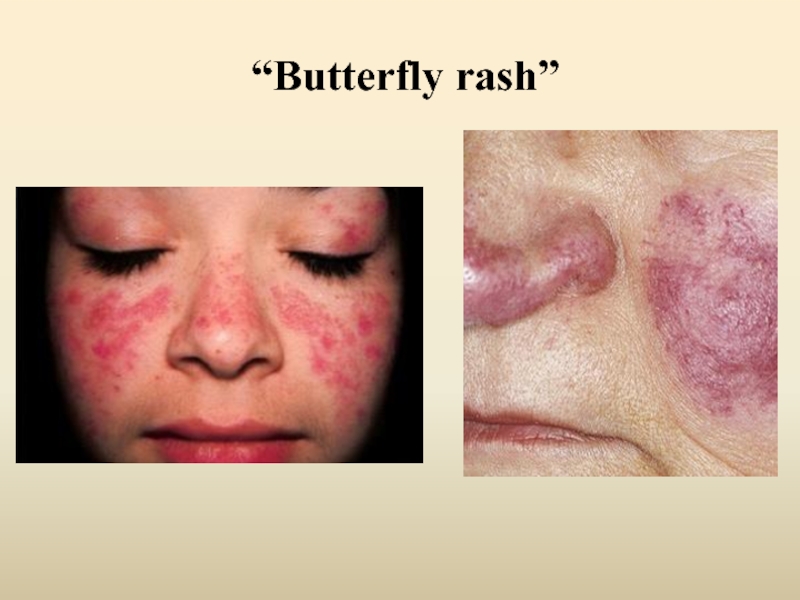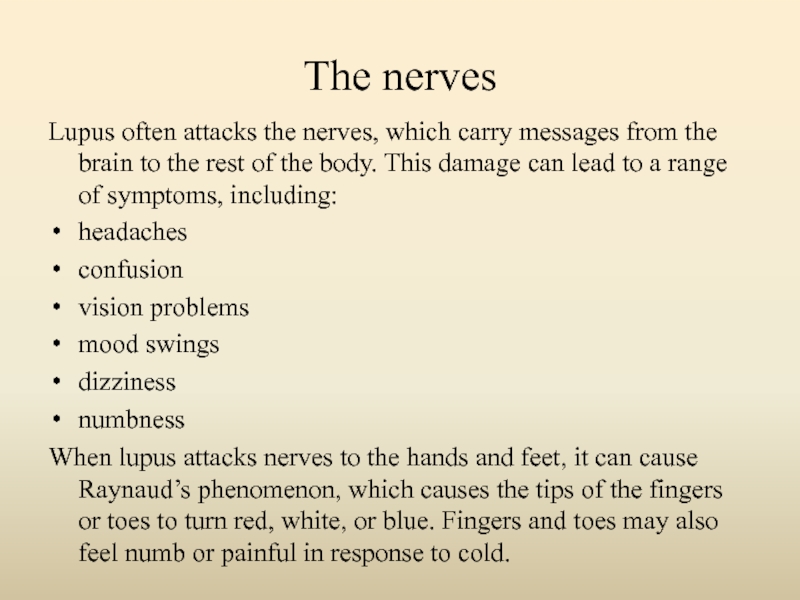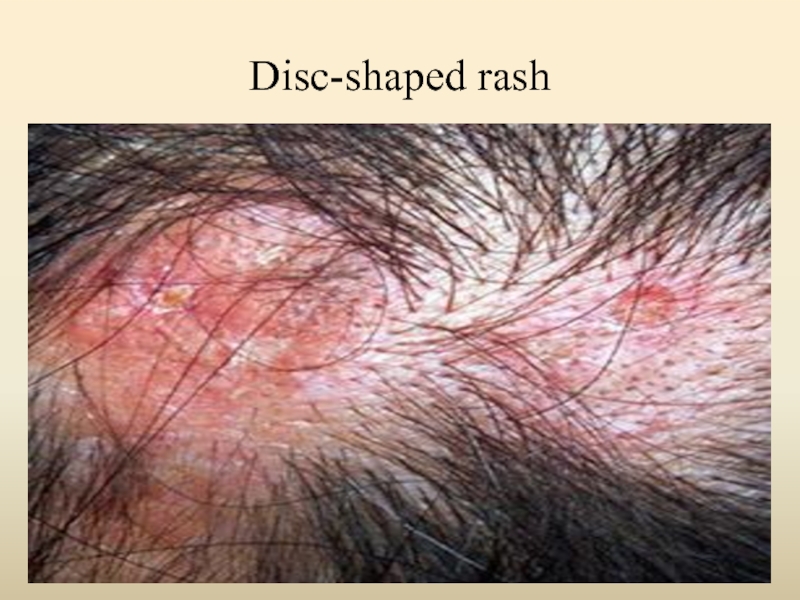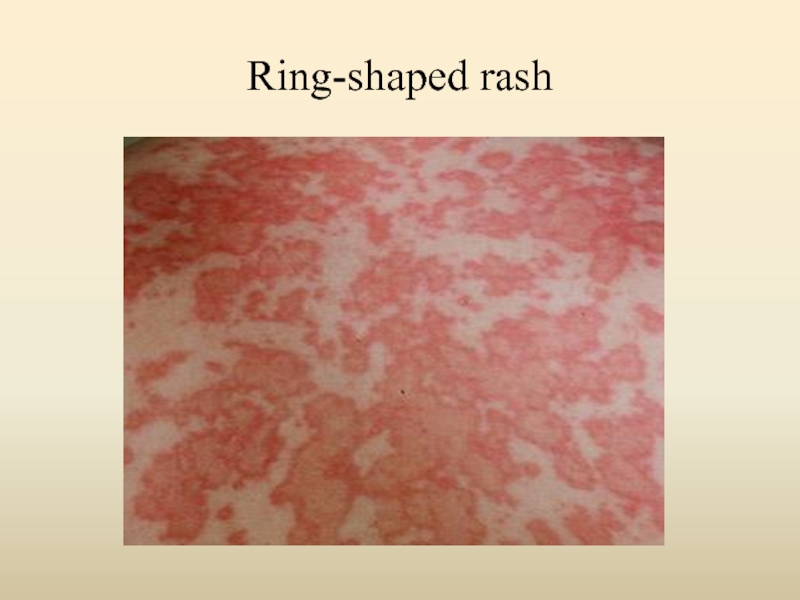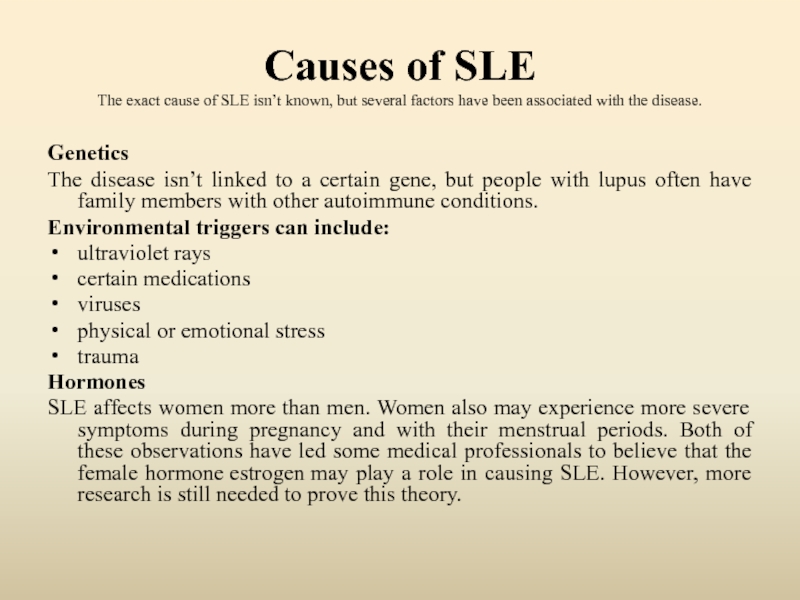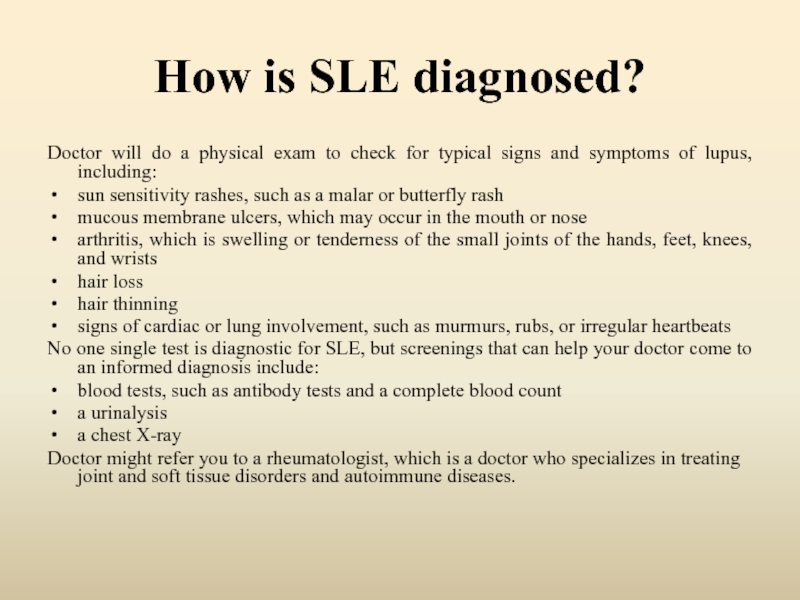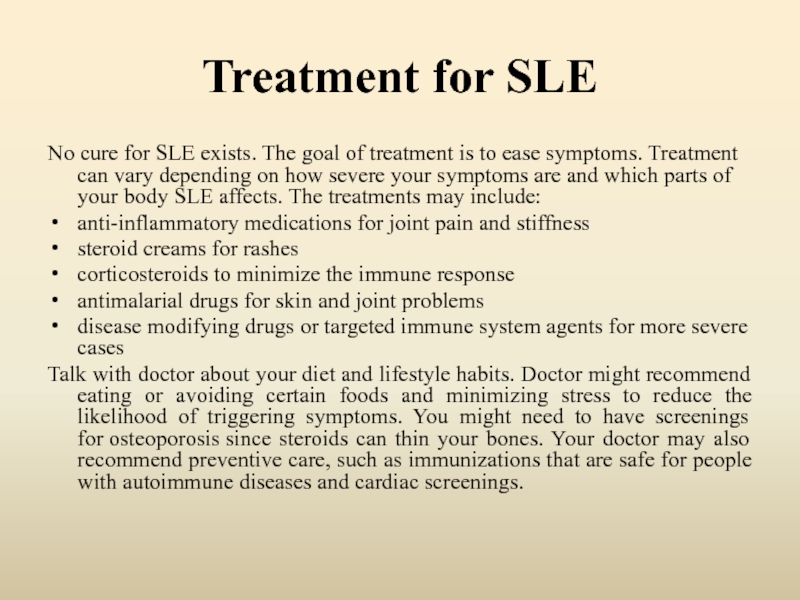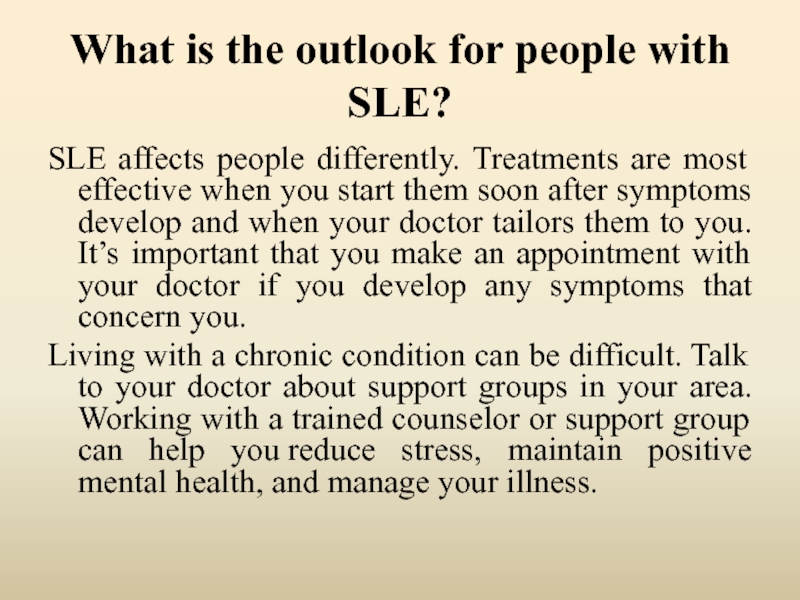Almaty 2017
- Главная
- Разное
- Дизайн
- Бизнес и предпринимательство
- Аналитика
- Образование
- Развлечения
- Красота и здоровье
- Финансы
- Государство
- Путешествия
- Спорт
- Недвижимость
- Армия
- Графика
- Культурология
- Еда и кулинария
- Лингвистика
- Английский язык
- Астрономия
- Алгебра
- Биология
- География
- Детские презентации
- Информатика
- История
- Литература
- Маркетинг
- Математика
- Медицина
- Менеджмент
- Музыка
- МХК
- Немецкий язык
- ОБЖ
- Обществознание
- Окружающий мир
- Педагогика
- Русский язык
- Технология
- Физика
- Философия
- Химия
- Шаблоны, картинки для презентаций
- Экология
- Экономика
- Юриспруденция
Systemic Lupus Erythematosus (SLE) презентация
Содержание
- 1. Systemic Lupus Erythematosus (SLE)
- 2. Plan What is systemic lupus erythematosus?
- 3. What is systemic lupus erythematosus?
- 4. Recognizing potential symptoms of SLE
- 5. “Butterfly rash”
- 6. The nerves Lupus often attacks
- 7. Raynaud’s phenomenon
- 8. Disc-shaped rash
- 9. Ring-shaped rash
- 10. Causes of SLE The exact cause
- 11. How is SLE diagnosed? Doctor will do
- 12. Treatment for SLE No cure for SLE
- 13. Long-term complications of SLE
- 14. What is the outlook for
- 15. Thank you for attention!
Слайд 2
Plan
What is systemic lupus erythematosus?
Recognizing potential symptoms of SLE
Causes of SLE
How
Treatment for SLE
Long-term complications of SLE
What is the outlook for people with SLE?
Слайд 3
What is systemic lupus erythematosus?
The immune system normally fights off dangerous infections
The term lupus has been used to identify a number of immune diseases that have similar clinical presentations and laboratory features, but SLE is the most common type of lupus. People are often referring to SLE when they say lupus.
SLE is a chronic disease that can have phases of worsening symptoms that alternate with periods of mild symptoms. Most people with SLE are able to live a normal life with treatment.
According to the Lupus Foundation of America, at least 1.5 million Americans are living with diagnosed lupus. The foundation believes that the number of people who actually have the condition is much higher and that many cases go undiagnosed.
Слайд 4
Recognizing potential symptoms of SLE
Symptoms can vary and can change over
severe fatigue
joint pain
joint swelling
headaches
a rash on the cheeks and nose, which is called a “butterfly rash”
hair loss
anemia
blood-clotting problems
fingers turning white or blue and tingling when cold, which is known as Raynaud’s phenomenon
Other symptoms depend on the part of the body the disease is attacking, such as the digestive tract, the heart, or the skin.
Lupus symptoms are also symptoms of many other diseases, which makes diagnosis tricky. If you have any of these symptoms, see your doctor. Your doctor can run tests to gather the information needed to make an accurate diagnosis.
Слайд 6
The nerves
Lupus often attacks the nerves, which carry messages from the
headaches
confusion
vision problems
mood swings
dizziness
numbness
When lupus attacks nerves to the hands and feet, it can cause Raynaud’s phenomenon, which causes the tips of the fingers or toes to turn red, white, or blue. Fingers and toes may also feel numb or painful in response to cold.
Слайд 10 Causes of SLE The exact cause of SLE isn’t known, but several
Genetics
The disease isn’t linked to a certain gene, but people with lupus often have family members with other autoimmune conditions.
Environmental triggers can include:
ultraviolet rays
certain medications
viruses
physical or emotional stress
trauma
Hormones
SLE affects women more than men. Women also may experience more severe symptoms during pregnancy and with their menstrual periods. Both of these observations have led some medical professionals to believe that the female hormone estrogen may play a role in causing SLE. However, more research is still needed to prove this theory.
Слайд 11How is SLE diagnosed?
Doctor will do a physical exam to check
sun sensitivity rashes, such as a malar or butterfly rash
mucous membrane ulcers, which may occur in the mouth or nose
arthritis, which is swelling or tenderness of the small joints of the hands, feet, knees, and wrists
hair loss
hair thinning
signs of cardiac or lung involvement, such as murmurs, rubs, or irregular heartbeats
No one single test is diagnostic for SLE, but screenings that can help your doctor come to an informed diagnosis include:
blood tests, such as antibody tests and a complete blood count
a urinalysis
a chest X-ray
Doctor might refer you to a rheumatologist, which is a doctor who specializes in treating joint and soft tissue disorders and autoimmune diseases.
Слайд 12Treatment for SLE
No cure for SLE exists. The goal of treatment
anti-inflammatory medications for joint pain and stiffness
steroid creams for rashes
corticosteroids to minimize the immune response
antimalarial drugs for skin and joint problems
disease modifying drugs or targeted immune system agents for more severe cases
Talk with doctor about your diet and lifestyle habits. Doctor might recommend eating or avoiding certain foods and minimizing stress to reduce the likelihood of triggering symptoms. You might need to have screenings for osteoporosis since steroids can thin your bones. Your doctor may also recommend preventive care, such as immunizations that are safe for people with autoimmune diseases and cardiac screenings.
Слайд 13
Long-term complications of SLE
Over time, SLE can damage or cause complications
blood clots and inflammation of blood vessels or vasculitis
inflammation of the heart, or pericarditis
a heart attack
a stroke
memory changes
behavioral changes
seizures
inflammation of lung tissue and the lining of the lung, or pleuritis
kidney inflammation
decreased kidney function
kidney failure
SLE can have serious negative effects on your body during pregnancy. It can lead to pregnancy complications and even miscarriage. Talk with your doctor about ways to reduce the risk of complications.
Слайд 14
What is the outlook for people with SLE?
SLE affects people differently.
Living with a chronic condition can be difficult. Talk to your doctor about support groups in your area. Working with a trained counselor or support group can help you reduce stress, maintain positive mental health, and manage your illness.

